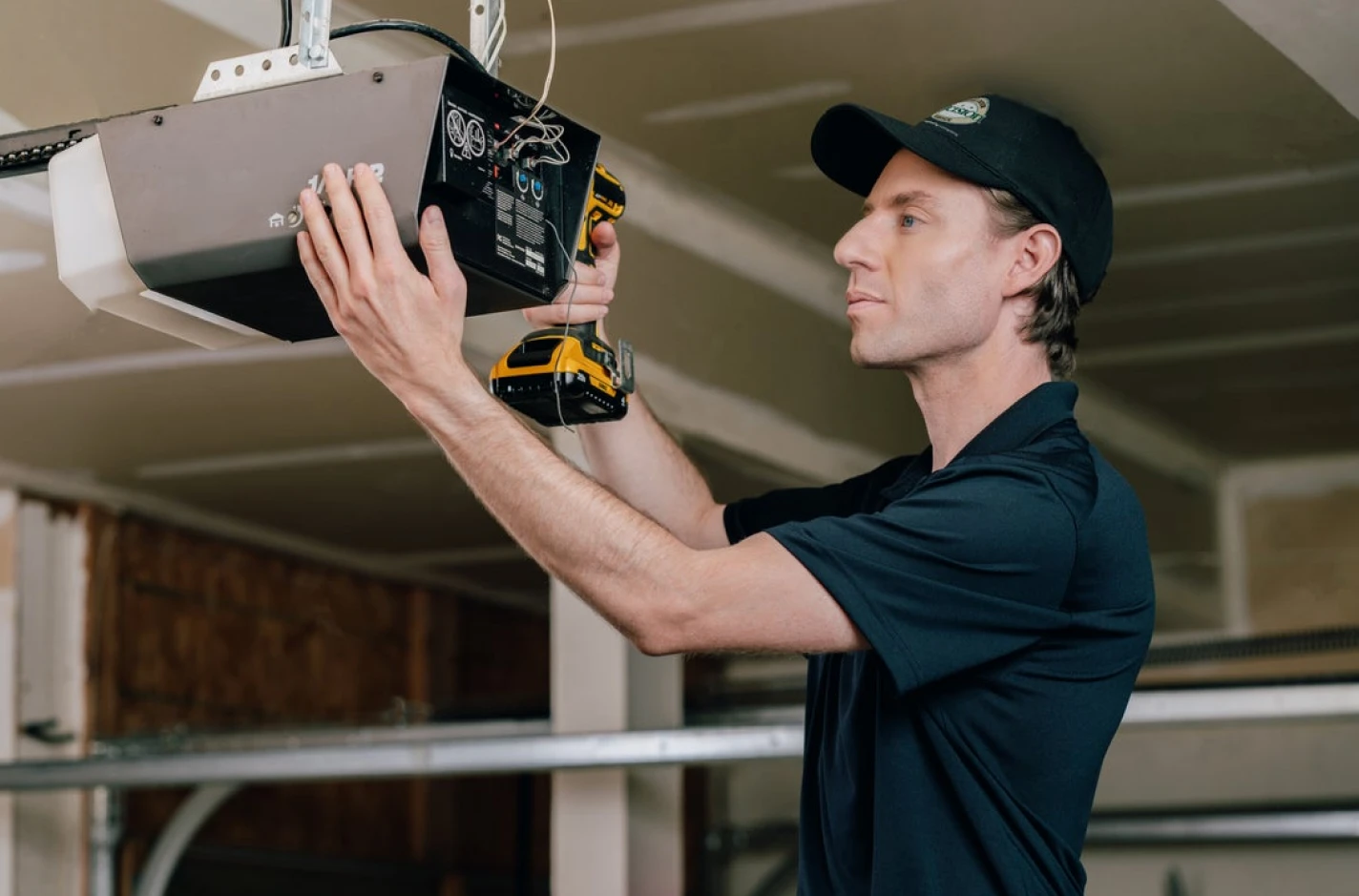A garage door opener is one of those home devices that most people take for granted—until it stops working. Yet, this humble piece of equipment plays a crucial role in home security, convenience, and even energy efficiency. With modern advancements, garage door openers have evolved from simple motorized systems into smart, connected devices that can be controlled from your smartphone. If you’re considering installing or upgrading your opener, understanding the different types, features, and maintenance needs is essential.
Types of Garage Door Openers
There are four main types of garage door openers, each with its advantages and drawbacks:
- Chain-Drive Openers
- These are the most common and affordable types. A metal chain drives the door’s movement, similar to a bicycle chain. While they’re reliable and durable, they tend to be noisy, making them better suited for detached garages or homes where the garage isn’t located near living spaces.
- Belt-Drive Openers
- Instead of a metal chain, these use a rubber belt to move the door. They’re quieter and smoother in operation, ideal for attached garages. Though they cost a bit more than chain-drive models, the noise reduction and longevity often justify the investment.
- Screw-Drive Openers
- These openers use a threaded steel rod to lift and lower the door. They have fewer moving parts, making them low-maintenance and efficient. However, they can be affected by temperature changes and may not be the quietest option.
- Direct-Drive Openers
- The newest and most advanced type, direct-drive openers use a stationary chain and a moving motor. They’re exceptionally quiet and durable, with fewer components that can wear out over time. While they come at a higher price, they’re perfect for homeowners who prioritize smooth operation and minimal maintenance.
Key Features to Look For
When choosing a garage door opener, consider these important features:
- Horsepower (HP): Residential garage doors typically require openers ranging from ½ HP to 1 ½ HP. Heavier, insulated, or double doors may need more power to operate efficiently.
- Smart Technology: Many modern models are Wi-Fi-enabled, allowing you to open or close your garage door remotely using an app. You can also receive notifications when the door is left open or when someone accesses your garage.
- Battery Backup: Power outages happen, but your garage door shouldn’t be unusable during one. A battery backup ensures your opener continues to function when the power goes out.
- Safety Features: Look for automatic reverse sensors that stop and reverse the door if an object or person is detected in its path. Rolling code technology is another must-have, as it prevents hackers from accessing your garage using code-grabbing devices.
Maintenance Tips
Regular maintenance ensures your garage door opener lasts for years without issues. Here are a few tips:
- Lubricate moving parts (such as chains, rollers, and hinges) every six months to keep operation smooth.
- Test the safety reverse feature monthly by placing an object in the door’s path.
- Check the balance of your garage door. Disconnect the opener and manually lift the door halfway; it should stay in place. If not, it may need spring adjustment by a professional.
- Inspect the remote batteries and replace them yearly to avoid unexpected failures.
When to Replace Your Garage Door Opener
If your opener is more than 10–15 years old, lacks safety features, or frequently malfunctions, upgrading to a new model is worth considering. Modern openers are not only quieter but also far more energy-efficient and secure. The convenience of smart controls and advanced sensors can significantly enhance your daily routine.
Final Thoughts
A garage door opener is more than just a convenience—it’s a key component of your home’s safety and comfort. Whether you’re upgrading to a smart system or replacing an old motor, understanding the different types and features will help you make a smart investment. With proper installation and maintenance, your new garage door opener will provide years of quiet, reliable operation.






Comments